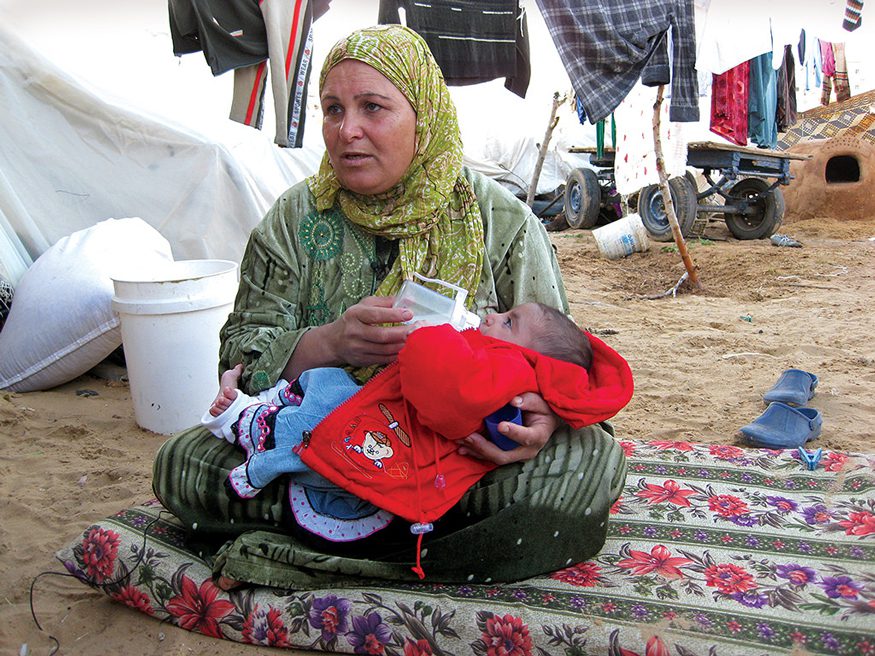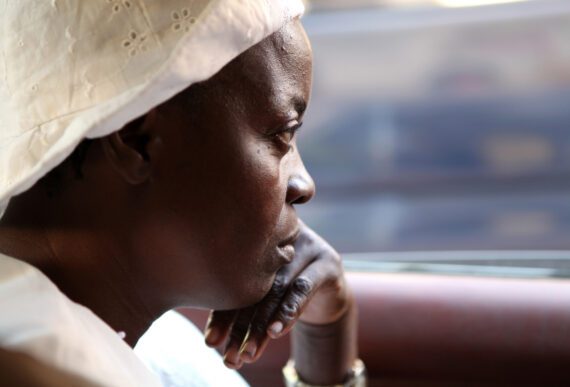By Michele Learner
Bread for the World Institute has been producing an annual Hunger Report for more than 25 years now. And yes, it’s always about hunger. Haven’t we run out of things to say yet?
Our answer — not surprisingly given the recent release of Hunger Report 2017, Fragile Environments, Resilient Communities — is no. That’s largely because hunger, while seemingly a straightforward, self-contained topic, affects all or nearly all aspects of human life. One reason that the world has made so much progress against global hunger since 1990 — the proportion of people who suffer from chronic malnutrition has been cut nearly in half — is that governments and the international community realized that problems usually thought of as separate from hunger are, in fact, inextricably linked. This enabled leaders to see and respond to the need to tackle problems simultaneously.
Some of these links seem obvious in hindsight, such as how malnutrition and lack of clean water reinforce each other. Others weren’t widely recognized until social changes sharpened them and data uncovered them, because they required a shift in thinking. A prime example is gender discrimination, whose complex interrelationships with hunger were the focus of our 2015 Hunger Report, When Women Flourish … We Can End Hunger. When women have more decision-making authority in their families and societies, and, crucially, access to education, they are better able to provide themselves and their children with sufficient nourishing food. The 2016 Hunger Report, The Nourishing Effect, explored another link that is commonly overlooked: the effect of hunger and food insecurity in the United States on our people’s health and our nation’s healthcare costs.
Here are several of the recommendations in Fragile Environments, Resilient Communities, along with a brief explanation of our reasons for making them.
- Develop a whole-of-government plan to coordinate and expand U.S. government engagement in fragile states.
- Work with the international community to increase official development assistance to conflict-affected and fragile states, including through multilateral mechanisms such as the World Bank’s International Development Association.
- Fulfill U.S. commitments to the Paris climate agreement adopted in December 2015, including financing the Green Climate Fund.
- Allow for much greater flexibility in how USAID partners with governments and civil society in fragile states.
- Invest in sectors such as agriculture and infrastructure shown to have the greatest potential to reduce poverty and generate large numbers of jobs.
- Invest in climate-smart social protection strategies so the people most vulnerable to climate change are not forced to adopt negative coping strategies.
- Strengthen the ability of national and local partners to prepare for and respond to natural disasters.
Fragile Environments, Resilient Communities focuses on a key obstacle to ending global hunger and malnutrition that, while not new, has recently been defined more specifically and has gotten more “name recognition” — fragile states (and other fragile environments). The report discusses two major reasons that countries or regions are fragile — the very old problem of war, and the relatively new one of climate change. (In order to make the idea of fragility less abstract, I sometimes think of these as the elephants in the room where we are working to end hunger). It’s not hard to understand why war causes hunger and malnutrition, and it’s very hard not to notice the tens of millions of people uprooted from their homes and livelihoods. But until recently, the international community didn’t fully recognize how much responsibility for continued hunger and malnutrition is borne by armed conflict. Now it is unmistakable: people are three times as likely to be hungry in countries affected by conflict as in countries at peace. Just one among a number of illustrations of the severity of the impacts: Since its start in 2011, the war in Syria has erased 35 years of development gains.
Climate change and the increasing number of natural disasters it has brought is the other elephant in the room when it comes to ending hunger. For years now, climate change has been forcing people to leave their land and homes. Whether the immediate causes are more intense and frequent droughts, more intense and frequent floods, new pests and crop diseases, and/or other results of climate change, the results are the same: people can no longer grow enough food. Even with prompt action to slow climate change, the number of climate refugees is expected to rise significantly over the next few years. If no effective global action is taken, it is hard to see an end in sight.
The United States, while not a fragile country, has communities in many states where 20 percent or more of the people live below the federal poverty line. The Hunger Report’s top-line recommendation for such areas of concentrated poverty is to “set a medium-term goal to end concentrated poverty in the United States by 2025.” For more on the report’s recommendations on concentrated poverty, please see “Accelerating Progress & Avoiding Harm on the Road to Ending Hunger” in this issue of Institute Insights.
Michele Learner is associate editor at Bread for the World Institute.



